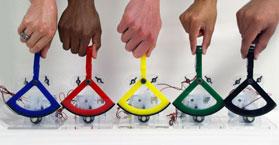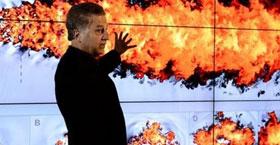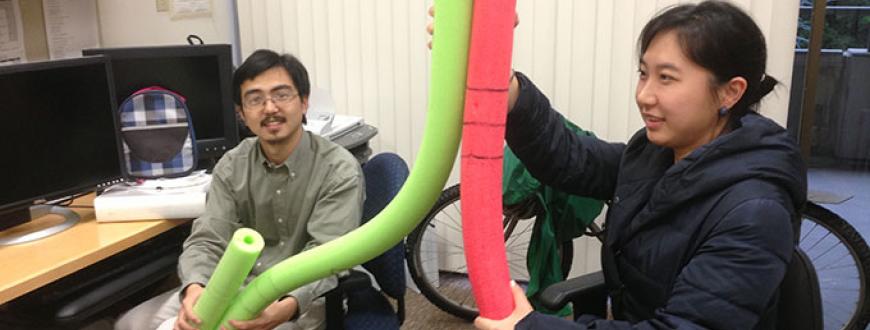Home
Welcome

Stanford Mechanical Engineering leads internationally in teaching and research in theme areas ranging from thermal transport and design to biomedicine, predictive science, and mechanics. Enjoy learning more about us on these pages.
-Prof. Ken Goodson, Chair
Information for
Research Themes

The department has five thematic research areas:
Recent News
Upcoming Events
Design

The Design Group emphasizes cognitive skill development for creative design. Interests include automatic control, creativity, design research, fatigue and fracture mechanics, human factors, manufacturing systems, micro-electromechanics systems (MEMS), robotics, and vehicle dynamics. Design also offers graduate and undergraduate programs in Product Design and is centrally involved with Stanford's d.school.
FPCE

Flow Physics and Computational Engineering Group is developing new theories, models, and computational tools for engineering design analysis and control of physical phenomena in engineering systems. Applications include aerodynamics, electronics cooling, environment engineering, materials processing, planetary entry, propulsion and power systems.
MC

Thermosciences

The Thermosciences Group conducts experimental and analytical research on fundamental and applied topics in thermal and fluid systems. Applications include air-breathing and space propulsion, bioanalytical systems, pollution control, electronics fabrication and cooling, stationary and mobile energy systems, biomedical systems, and materials processing.
Biomechanical

BME teaching and research focuses primarily on musculoskeletal biomechanics, neuromuscular biomechanics, cardiovascular biomechanics, and rehabilitation engineering. Research on hearing, ocean, plant, and vision biomechanics are conducted in collaboration with faculty in biology, engineering, and medicine.
CDR

The Center for Design Research scholar community focuses on engineering design innovation practice and education, facilitating individual creativity, team design process, and developing advanced tools and methods that promote superior design and manufacturing of products. Researchers develop concepts and technical solutions for design thinking, concurrent engineering, distributed collaborative design, and design knowledge re-use.
CTR

Center for Turbulence Researchis a research consortium for fundamental study of turbulent flows. It is jointly operated by Stanford University and the National Aeronautics and Space Administration (NASA).
PSAAP

Predictive Science Academic Alliance Program Center's overall objective is the Quantification of Margins and Uncertainties (QMU) of an air-breathing hypersonic vehicle with a special focus on the prediction of off-design, transient conditions and their associated failure modes. The Center focuses on the unstart phenomenon (sudden engine stall) due to thermal choking in the HyShot II scramjet.















